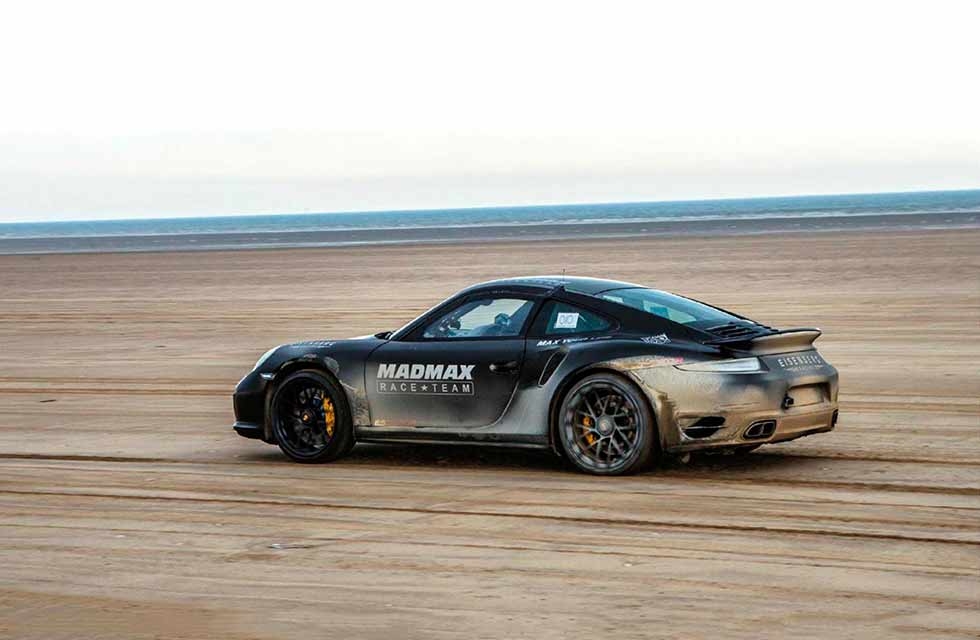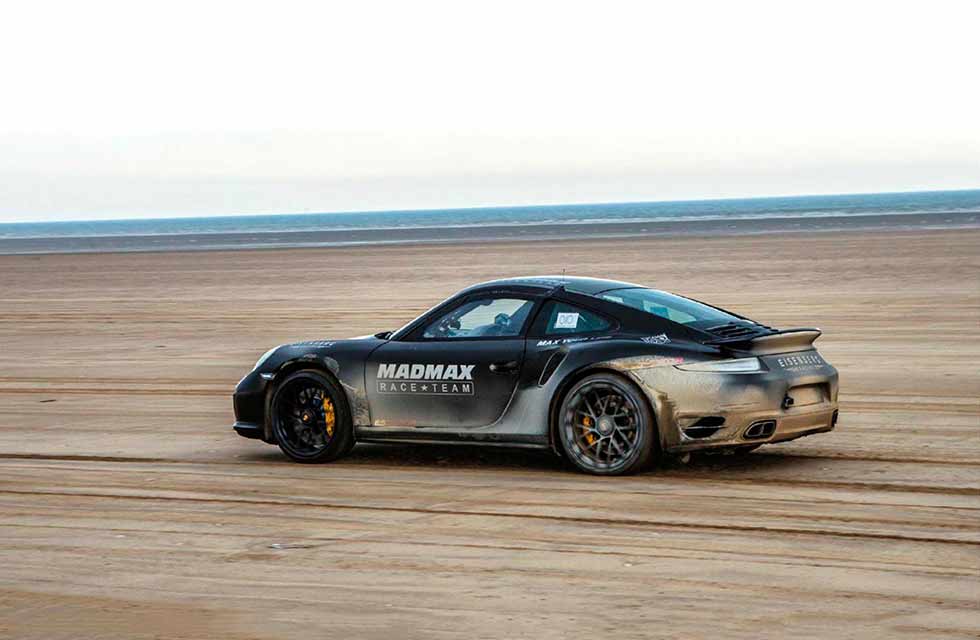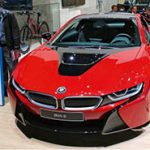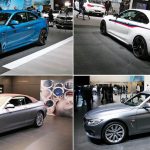
Speed freak Zef Eisenberg has set four world records at Pendine Sands at the wheel of a 1,200hp 991 Turbo. Drive-My meets the man himself, as well as the car responsible for firing him into the record books. Written by Kieron Fennelly. Photography by Glen Smale.
1,200HP, FOUR WORLD RECORDS: HISTORY-MAKING TURBO
Turbo record-breaker
The full inside story on how Speed Freak Zef Eisenberg broke four land speed records with the help of a modified 991.1 Turbo
Zef Eisenberg is no ordinary racer. The man behind Maximuscle, the sports drink, likes the extremes of motorsport: the Guernsey-based enthusiast holds more than 44 UK, world or Guinness speed records including, though unofficially, Britain’s fastest motorcycle crash, a 230mph accident which left him in a wheelchair. However, extreme sport demands extreme determination, and evidently Eisenberg has it in abundance. Within a year he had taught himself to walk again and was back behind the wheel. In May 2018 he became the first man to exceed 200mph on Carmarthenshire’s Pendine Sands, the scene of a hundred years of speed record attempts. A year later he returned at the wheel of his 991 Turbo and spectacularly rewrote the Pendine record book, achieving the fastest sand speed record by a wheel-powered vehicle at 210.3 mph, the fastest flying quarter mile at 196.9mph (mean), the fastest flying quarter mile at 206.5mph (one way) and the fastest flying mile (two way) at 186.9mph – the same measurement as Sir Malcolm Campbell, no less.

Campbell’s speed record of 174.8mph, set in the specially built Bluebird which used a 12-cylinder, 22-litre Napier aero engine, stood for 90 years. Zef Eisenberg’s steed by comparison is a 2014 production Porsche 911. He says he chose the 911 Turbo because it is such a tunable car: “The choice boils down really to the 911 Turbo or the Nissan GTR. Both are infinitely tunable and both have huge tuning aftermarkets, but the Porsche scores by having better aerodynamics and a lower centre of gravity. These make it less likely to overturn in a high-speed spin.”
“In a dramatic development, the 911 hit a damp patch of sand which upset its traction, and the Porsche went sideways”
And at Pendine Sands on 18 May 2019, spin is exactly what Zef did. “Also I wanted a recognisably road-legal car in which I could drive from the hotel to the venue and back afterwards for the celebrations. I didn’t want to set the record in some highly technical speed device which arrived on a trailer.”
The engine itself has to have proven strength because, unlike drag racing where the engine is at full power for less than a minute, the speed runs on sand mean the engine is giving 100 per cent for over three minutes. Careful calibration of the turbocharger judges precisely the degree of boost necessary for maximising traction.
“What you don’t want is the sudden arrival of turbo boost,” Eisenberg continues. “Grip on hard-packed sand is nothing like tarmac so we have carried out a lot of experiments on the dynamometer with boost levels. The engine dynos at 1,500 horsepower, which translates to 1,200hp at the wheels, but on sand we back the boost off to 700hp to ensure the smoothest possible torque curve. If the first run works, we increase the boost in stages to about 800.”
Zef Eisenberg’s exploits also include sand speed records on two wheels. His motorcycle experience has helped the set-up for the 911. At a previous record attempt at Pendine in April this year he had to abort the attempt on two wheels because lack of traction caused his Honda’s rear wheel to spin so hard that the engine was damaged and heat destroyed the tyre. Zef immediately abandoned plans to run the 911 the next day and postponed a further attempt until his team had dismantled the bike to see exactly what damage had been done.
As Eisenberg says, his 991 Turbo does appear remarkably standard: externally the mirrors are removed for the record attempts but it retains, for instance, its production leather-upholstered interior, even if the seats are removed and replaced by a carbon bucket for the driver; the fitting of carbon-fibre GT2/3 Cup doors and an FIA-approved rollcage are also semi-demountable. After the record attempts the seats and standard doors are refitted, the harnesses removed, and only the rear structure of the cage remains. “We have to use competition doors to accommodate the side stanchions of the rollcage,” he explains. “Competition doors save 150kg, but losing weight is not the object: unlike racing we need the car to have a certain weight to maximise traction. There is plenty of power anyway, and we ballast the car if necessary.”
“These are race-grade engines, but with proven safeguards incorporated you can run them up to 900hp, and they will go 10,000 miles before needing a rebuild”
How were the records measured?
ES Motor uses industry-standard Race Logic for performance testing. The equipment stays in the 911 during record runs as a back-up, but the particular conditions of sand mean that a GPS sensor is also employed: “GPS differentiates speed across the ground and wheel speed,” explains Ibrahim. “We need to be able to monitor wheelspin very precisely because once the wheels start losing traction acceleration diminishes but engine speed increases, so we need to be able to throttle back to optimise acceleration and also to protect the engine.” All the vital control boxes, the GPS, the ECU, the Vee-box and an exhaust gas sensor are placed inside the cabin on a rear parcel shelf that ES Motor has fashioned to keep them well away from water and sand.
The 911 was prepared for the speed record by ES Motor, a specialist Turbo tuner which has modified large numbers of Turbos, especially Porsche, for the Middle Eastern market. For the Eisenberg 991, director Ibrahim Akpinar explains that ES began with the stock 4.0-litre and increased both bore and stroke to make 4,100cc. The standard crankcase is used, but ES installed a bespoke crankshaft, Capricorn cylinder liners and Carillo connecting rods. The head is substantially rebuilt, although ES does not wish to disclose everything it does here, and the stock plenum is replaced by a far larger billet aluminium item which ES has made to its specification. “When you are looking at producing twice the horsepower of the stock GT2 RS, you need to be able to handle far greater quantities of air,” explains Ibrahim. ES also adds port injection, doubling the number of injectors from six to twelve – this means a bespoke ECU is required and all the fuel pumps are upgraded.
“We use a third-party dynamometer in Birmingham, one used by other tuners so we know our results are comparable. Everything we do is based on our experience: my own 991 Turbo which runs to 1,400hp is my current testbed and my partner is running a similarly boosted 997TT. Zef’s engine is the 13th we have tuned to that level. The essential thing for us is reliable horsepower, so we build in sensors to monitor everything in the engine which will put it in limp-home mode before any serious damage is caused. We add an extra GT2 RS intercooler and on the record runs we spray cold water onto it. Telemetry readings at Pendine showed that intake air was no higher than 16ºC (60ºF), which is very low.
“R&D is our biggest cost, the time and effort to assemble the right combination of components and make it reliable. These are race-grade engines, but with proven safeguards incorporated you can run them up to 900hp, and they will go 10,000 miles before needing a rebuild.”
So far, the PDK gearbox internals have been largely standard, although ES Motor is investigating stronger clutches and is designing casing made from billet aluminium. Similarly standard are the Porsche’s brakes: “The stock steel discs work fine,” says Ibrahim. “Sand is too coarse for ceramics, which would quickly be ruined.”
Six weeks after his failed attempt with his Honda, Eisenberg returned to Pendine Sands. It turned out that his first run broke all the records, and as it transpired this was to be his best run of the day. For Zef, immediately breaking his previous record was not entirely a surprise: “We’ve had five years’ experience doing this and we learn from what we’ve achieved before. As we saw with the bike, the key is to be able to get the power down consistently all the way through the run. With dyno readings we had calculated the optimum power curves. On that first run we calibrated it at 750hp, and as you saw, it worked.”
The advantage, says Zef, of getting onto the sand early in the day is that there is an element of condensation or dew which binds the sand and improves traction. As the sun warms the ground this dries out, the surface becomes dustier and grip diminishes.
Between speed attempts the car needs to cool down, and Ibrahim was insistent that at least 90 minutes be allowed between runs. Eisenberg’s second run in the early afternoon was into a slight headwind and showed no improvement. A third effort had to be negotiated with the clerk of the course; conditions were changing as the day wore on, and the official was concerned that a couple of motorcyclists who had come to grief might have rutted the surface. But Zef was determined. After numerous practice runs in the preceding days he felt more was to come. In a do-or-die effort, the boost was upped to give 850 horsepower.
“A quarter of a mile before the finish of the measured mile I was at 215mph, so I had every chance of getting to 223 or 224,” says Zef. But, in a dramatic development, the 911 hit an almost-invisible patch of damp sand which upset its traction, and the Porsche went sideways. The incoming tide, not apparent on the beach itself, was quietly creeping in below the surface. “It was something I had rehearsed in my mind so many times, though obviously never experienced. As the car went broadside I held the throttle to the floor. You keep the wheels spinning to stop sand building through the slide and potentially causing the car to turn over.” Video footage taken by a spectator vividly shows the 911 spinning several times, but Eisenberg has no recollection of this: “Because of the massive g-force in a 200mph spin, I must have blacked out momentarily because I can remember only going sideways.”
Had the car rolled at such high speed, damage would have been substantial, but it stayed on its wheels and both 911 and its driver were unhurt. However, going backwards at 200mph deranged the PDK, which will have to be rebuilt. In addition three tyres were flat from the 911’s gyrations, so this incident obviously brought an end to proceedings. Afterwards, Eisenberg was naturally elated, but also philosophical: “We have the sand speed record now, and after five years I’m happy with that.” That doesn’t mean that he’s going to rest on his laurels, however. “We’re going to look at tarmac speed records now, specifically the flying mile. We have already done some practice at Elvington, the former RAF airfield which has a 1.9 mile runway,” he says. Eisenberg knows this stretch of bitumen well – it was here he came to grief in 2016 on his motorcycle.
The man is utterly undaunted: “We’ll be up there by late summer. We have to clean all the sand and salt out of the 911 and the body and rebuild the engine because any sand ingress will obviously damage it, and of course replace the gearbox.”
Once again he will be using his trusty Turbo: “Of course for tarmac we can turn the boost up, but I won’t strip it or try to lighten it – I really appreciate the comfort of Porsche interiors. I want to be able to put the seats back in and drive the car to and from the record attempt, and stop at a Premier Inn or a pizza restaurant and drive it away again. I’d like to get the record with the car as it stands. We’ll see about lightening it perhaps next time around.”
RIGHT Eisenberg gets confirmation of his record-breaking runs. ABOVE Aside from telemetry additions, the 991 Turbo’s cockpit is largely stock. LEFT Eisenberg talks through technical details with his MADMAX team and Ibrahim Akpinar of ES Motor. BELOW Car and driver prepare for their first (and record-breaking) run on sand. ABOVE Akpinar and Eisenberg assess the car data after the Turbo’s second run of the day.
Porsche: collectors of speeds records
Porsche is no stranger to world speed records: routinely exceeding 230mph and even edging 250mph during the Le Mans practice weekend in April 1969, the 917s were the fastest racers ever seen on the three-mile Mulsanne straight. At the end of the 917’s now-turbocharged career, Mark Donohue lapped Alabama’s Talladega oval in May 1975 at a closed circuit world record of 221mph. Stefan Bellof’s amazing 6:13.00 lap of the Nürburgring in a works 956 lasted 35 years before factory driver Timo Bernhard reduced this by almost a minute with a 5:19.6 timing, topping out at 245.3 mph in a 919. Obviously Bernhard’s was a record attempt, as the traditional Nordschleife ceased altogether to be used for sports car racing only a few years after Bellof’s famous lap.
Among genuine production cars, the 991 GT2 RS is the fastest rear-drive car around the Nürburgring at 6:47.00. It was beaten to fastest production car of all time by a mere two-and-a-half seconds only by the V12 Lamborghini Aventador, which is all-wheel-drive.
On occasion a Porsche has helped set a record, as with British cyclist Neil Campbell who in 2018 pedalled up to a record 149mph behind a Cayenne Turbo. In 1979 Henri Pescarolo drove a Martini 935 to provide slipstream for French cyclist Jean Claude Rude, but a puncture apparently ended the attempt at about 100mph.
Finally, the slowest speed record for a Porsche is almost certainly the 8mph achieved at Roissy Charles de Gaulle in 2017 when a Cayenne V8 diesel hauled a 385-tonne Airbus from a standstill over 50 yards.













